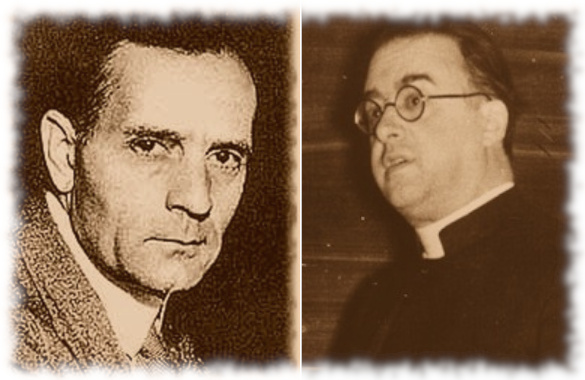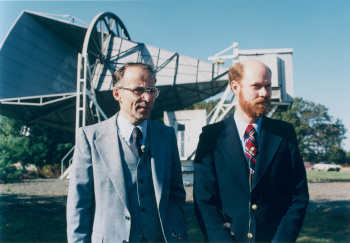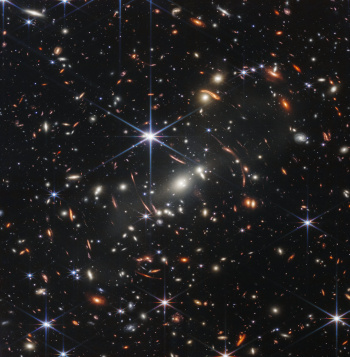No Bang?
October 3, 2022
A very old
proverb states that "
Time and tide wait for no man."[1] This proverb expresses two different
concepts of
time; namely, the
linear march of time, as shown on a
clock, and
cyclic time of things
repeating. The
ancient Greeks embraced two time
deities corresponding to these two concepts. There was
Chronos (Χρόνος, from which we get our word, "
chronology") the
personification of linear time; and, there was also
Aion (Αιών, the deity representing cyclic time often depicted with a
zodiac wheel representing the
annual cycle. Our word, "
aeon/eon," comes from his name.

The ancient Greek philosophers believed that the universe and time had neither beginning nor end. This is expressed by Heraclitus (c. 535 - c. 475 BC), as shown above. It reads in translation, "This universe, which is the same for all, has not been made by any god or man, but it always has been, is, and will be an ever-living fire, kindling itself by regular measures and going out by regular measures." (Fragment 30 of Heraclitus, Greek text and English translation via Wikiquote.
The Greek
idea of a universe that's always existed was supplanted in
Western culture by the
Judeo-Christian idea that
God created the universe at a time not too far in the past, and the
age of the universe was essentially the same as the
age of the Earth.[2]
Archbishop of the
Church of Ireland,
James Ussher (1581-1656), added up all the dates in the
Bible in 1650 to produce
his chronology that placed the beginning of the world in 4004 BC.
As I wrote in an
earlier article (Newton's Chronology, March 6, 2013), renowned
physicist,
Isaac Newton (1642-1726), wrote his own
timeline of
history. This 1728
chronology, "
The Chronology of Ancient Kingdoms,"[3] relied on many sources from the
classical literature, such as the the works of
Herodotus,
Hesiod,
Homer,
Pliny, and
Plutarch. The earliest date that Newton could verify was a 1125 BC reference to an
Egyptian Pharaoh, possibly
Ramesses IX. Newton also used numerous
astronomical references in
classical literature to set dates.[4]
At the start of the 20th
century,
astronomers believed that the full extent of the
universe was our
Milky Way galaxy. The Milky Way, 150-200 thousand
light year in extent and hosting 100-400 billion
stars, was thought to exist as an
island of
light in a vast
empty space. The first
evidence pointing to something that might spoil this simple
model was the
observation of unusual objects that were known as
spiral nebulae. These nebulae were found to be large and distant
galaxies outside the Milky Way.
Further observation of these galaxies showed that the universe exists, not in a
steady state, but in a
state of expansion.
American astronomer,
Edwin Hubble (1889-1953) quantified this expansion in the
eponymous Hubble's law, which expresses the
rate of
expansion of the universe. If the universe is expanding, there's the simple idea that we can
extrapolate backwards in time to a point of
creation.

Edwin Hubble (1889-1953) and Georges Lemaître (1894-1966). While Hubble is renowned for discovery of universal expansion, Belgian priest and astronomer, Georges Lemaître, discovered this law before Hubble. However, he published his 1927 paper on this idea in French in a lesser known journal where it was ignored.[5] As I wrote in a previous article (Hubble and His Law, July 31, 2013), noted astronomer, Virginia Trimble (b. 1943), listed quite a few precursors other than Lemaître to Hubble's law in an arXiv article.[6] (Hubble photograph via Wikimedia Commons, modified for artistic effect. Lemaître photograph via Wikimedia Commons, modified for artistic effect.)
Further evidence that the universe was created at a particular moment was the discovery in 1964 of
cosmic microwave background radiation by
Arno Penzias (b. 1933) and
Robert Wilson (b. 1936). This
radiation at
microwave frequencies is the remnant of a
very early stage of the universe that occurred about 0.4 million years after the
Big Bang; that is, 0.03% into the present
age of the universe. This microwave background radiation has been measured in great detail by the
Cosmic Background Explorer space observatory and the
Wilkinson Microwave Anisotropy Probe, and it corresponds to a
thermal black body spectrum at a
temperature of about 2.725 K.

Arno Penzias (b. 1933) (left) and Robert Wilson (b. 1936) (right), standing at the horn antenna with which they discovered the cosmic microwave background radiation.
This image was taken in 1978 at the time of their award of the Nobel Prize in Physics.
(Image compliments of the Bell Labs archives. Click for larger image.)
Precise observation has shown that the universe is not just expanding, but that the
expansion is accelerating. This is contrary to the prior view that the expansion should be
decelerating as a consequence of
gravitation. A
dark energy component of the universe is presumed to be the cause for this expansion.
Such evidence has persuaded nearly every
scientist, myself included, that the universe was created in a
Big Bang 13.787 ± 0.020 billion years ago. However, the Big Bang had some problems. Why is the universe so
isotropic, and why is the cosmic microwave background radiation so uniform? The is all
explained by the idea that there was an
exponential expansion of the universe that occurred in an
inflationary epoch during which the universe increased in extent by a factor of at least 10
26 and in
volume by a factor of at least 10
78 in a period lasting just 10
-8 yactoseconds; that is 10
-32 seconds. Cosmic inflation has been criticized as being
not testable.
I've argued in previous articles that science advances in step with the quality of
scientific instruments. This is quite true for
cosmology, as numerous examples from
Galileo's telescope to the
Hubble Space Telescope and the recently launched
James Webb Space Telescope[7] have shown. The Webb Telescope has imaged the universe as it was just 250 million years after the Big Bang, and what it showed us was indeed surprising. Massive galaxies appear to have existed at that time when no such thing was expected, since not enough time would have passed for their
formation.[8] Can it be possible that our idea of a Big Bang is actually wrong? As one paper posted on
arXiv notes, "Neither the high number of such objects found nor the high
redshifts they reside at are expected from the previously favored
predictions."[9]

The edge of the universe, as seen by the James Webb Space Telescope.
The orange arcs are galaxy images distorted as a result of gravitational lensing by closer galaxies of the SMACS 0723 galaxy cluster.
(NASA image. Click for larger image.)
Georges Lemaître (1894-1966), as pictured earlier in the article,
proposed the idea of the Big Bang in 1931 as the
explosion of the
primeval atom, but there was not much evidence for this until the 1964 discovery of the cosmic microwave background radiation. There were alternative
theories even then, including the
Alfvén-Klein plasma cosmology in which
repulsion between regions of
matter and
antimatter was the cause of the expansion, an idea that also explained the
dearth of antimatter in our particular region.
This
plasma cosmology was developed by
Hannes Alfvén (1908-1995), who was awarded the 1970
Nobel Prize in Physics for his discovery of
magnetohydrodynamic Alfvén waves, an important part of
heat conduction to the
solar corona, and
Oskar Klein (1894-1977). Klein is also famous for the
Kaluza–Klein theory that the universe has extra
dimensions that exist in undetected
curled-up states, an idea that's now a part of
string theory.
One arXiv posting includes the word, "Panic," in its title.[10] The panic arises because these galaxies correspond to a time just 400-500 million years after the Big Bang, but they appear to host
stars that are more than a billion years old. The universe keeps surprising us, as the discoveries of
dark matter and dark energy have shown.
My money is still on the Big Bang until much more observation and analysis disproves it.
References:
- Origin of: Time and tide wait for no man, idiomorigins.org.
- How Old is the Universe? at History of Scientific Cosmology AIP Website.
- Isaac Newton, "The Chronology of Ancient Kingdoms" (Project Gutenberg).
- Yaël Nazé, "Astronomical arguments in Newton's Chronology," arXiv, December 20, 2012.
- Jean-Pierre Luminet, "Editorial note to "A Homogeneous Universe of Constant Mass and Increasing Radius accounting for the Radial Velocity of Extra--Galactic Nebulae" by Georges Lemaître (1927)," arXiv, May 28, 2013.
- Virginia Trimble, "Anybody but Hubble!" arXiv, July 8, 2013.
- James Webb Space Telescope, Goddard Space Flight Center.
- Govert Schilling, "Webb Telescope Shatters Distance Records, Challenges Astronomers," Sky and Telescope, August 10, 2022.
- Haojing Yan, Zhiyuan Ma, Chenxiaoji Ling, Cheng Cheng, Jia-sheng Huang, and Adi Zitrin, "First Batch of Candidate Galaxies at Redshifts 11 to 20 Revealed by the James Webb Space Telescope Early Release Observations," arXiv, July 23, 2022.
- Leonardo Ferreira, Nathan Adams, Christopher J. Conselice, Elizaveta Sazonova, Duncan Austin, Joseph Caruana, Fabricio Ferrari, Aprajita Verma, James Trussler, Tom Broadhurst, Jose Diego, Brenda L. Frye, Massimo Pascale, Stephen M. Wilkins, Rogier A. Windhorst, Adi Zitrin, "Panic! At the Disks: First Rest-frame Optical Observations of Galaxy Structure at z > 3 with JWST in the SMACS 0723 Field," arXiv, July 28, 2022.
Linked Keywords: Proverb; Time and tide wait for no man; concept; time; linearity; linear; clock; cyclic; repeat; repeating; ancient Greece; ancient Greeks; Greek primordial deities; Chronos; chronology; anthropomorphism; personification; Aion (deity) (Αι ών); zodiac wheel; year; annual; aeon; eon; ancient Greek philosophy; ancient Greek philosopher; universe; Heraclitus (c. 535 - c. 475 BC); translation; fire; fire making; kindling; Wikiquote; idea; Western culture; Genesis creation narrative; Judeo-Christian; God; Book of Genesis; creation of the universe; age of the universe; age of the Earth; Archbishop of Armagh; Church of Ireland; James Ussher (1581-1656); Bible; Ussher chronology; physicist; Isaac Newton (1642-1726); timeline; history; The Chronology of Ancient Kingdoms; classics; classical literature; Herodotus; Hesiod; Homer; Pliny the Elder; Plutarch; Egypt; Egyptian; Pharaoh; Ramesses IX; astronomy; astronomical; century; Milky Way; galaxy; light year; star; island; light; vacuum; empty space; scientific evidence; conceptual model; observational astronomy; spiral galaxy; spiral nebula; steady state; metric expansion of space; American; Edwin Hubble (1889-1953); quantification (science); quantified; eponym; eponymous; Hubble's law; rate (mathematics); extrapolation; extrapolate; chronology of the universe; Georges Lemaître (1894-1966); celebrity; renowned; expansion of the universe; universal expansion; Belgium; Belgian; priesthood (Catholic Church); priest; astronomer; physical law; scientific literature; publish; paper; French language; scientific journal; Virginia Trimble (b. 1943); precursor; arXiv; Wikimedia Commons; cosmic microwave background radiation; Arno Penzias (b. 1933); Robert Wilson (b. 1936); electromagnetic radiation; microwave; frequency; recombination (cosmology); very early stage of the universe; Big Bang; age of the universe; space observatory; Wilkinson Microwave Anisotropy Probe; black-body radiation; thermal black body spectrum; temperature; horn antenna; award; Nobel Prize in Physics; Bell Labs; precision; precise; accelerating expansion of the universe; deceleration parameter; decelerating; gravitation; dark energy; scientist; isotropy; isotropic; inflation (cosmology); exponential expansion of the universe; inflationary epoch; volume; yactosecond; falsifiability; not testable; scientific instrument; physical cosmology; Galileo Galilei; optical telescope; Hubble Space Telescope; James Webb Space Telescope; galaxy formation and evolution; arXiv; redshift; prediction in science; James Webb Space Telescope deep field image; shape of the universe; edge of the universe; arc (geometry); digital image; gravitational lens; gravitational lensing; SMACS 0723 galaxy cluster; NASA; history of the Big Bang theory; explosion; theory; Alfvén-Klein plasma cosmology; repulsion; matter; antimatter; dearth; plasma cosmology; Hannes Alfvén (1908-1995); Nobel Prize in Physics; magnetohydrodynamic; Alfvén wave; thermal conduction; heat conduction; solar corona; Oskar Klein (1894-1977); Kaluza–Klein theory; dimension; compactification (physics); curled-up state; string theory; dark matter; scientific wager.